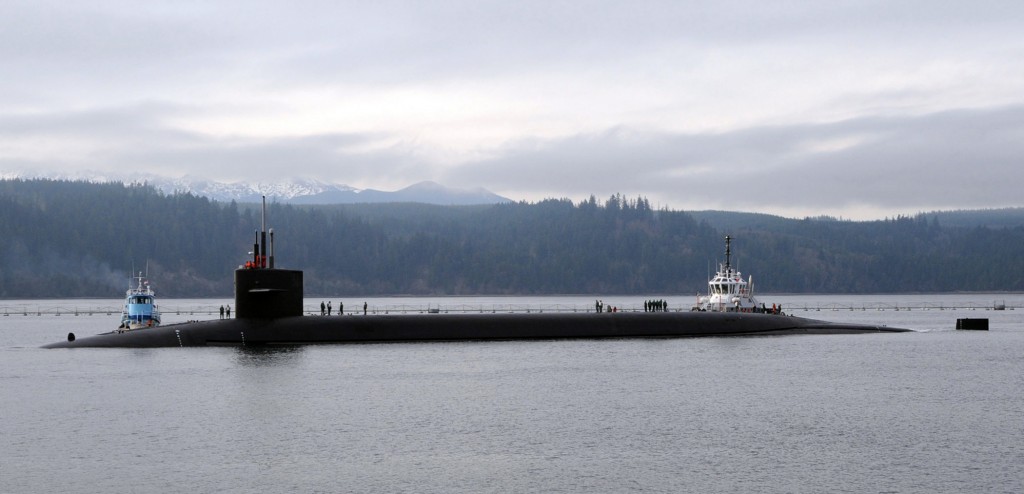Sourced : Bloomberg
By Anthony Capaccio
The Pentagon’s top weapons buyer has approved advanced development for a fleet of 12 new nuclear-armed submarines, a potential $128 billion project that the Navy calls its top priority.
Frank Kendall, the undersecretary for acquisition, signed the decision memo that officially moves the program forward late Wednesday. Shortly before acting, Kendall, who’s departing when President Barack Obama steps down on Jan. 20, said in an interview,“I’m hoping to have it done before I leave.”
The new Columbia-class submarine is part of a trillion-dollar program to modernize the U.S.’s sea-air-land nuclear triad over the next 30 years, including maintenance and support. Obama has backed the effort, to the chagrin of some arms control advocates, and President-elect Donald Trump has seemed to signal his support. “The United States must greatly strengthen and expand its nuclear capability until such time as the world comes to its senses regarding nukes,” Trump wrote in a Twitter posting.
The Navy is in contract talks with General Dynamics Corp., which will lead the program to replace aging Ohio-class submarines, with Huntington Ingalls Industries Inc. as the top subcontractor.
General Dynamics rose 1.4 percent to $177.99 at 10:57 a.m. New York time. Huntington Ingalls rose 1.7 percent to $195.16, after initially climbing as much as 2.8 percent, the most since Nov. 10, 2016. Huntington Ingalls is the Pentagon’s top shipbuilder and depends heavily on revenue from such contracts.
The projected $128 billion acquisition cost, an estimate that factors in expected inflation, puts the new submarines behind only the $379 billion F-35 aircraft and the $153 billion multiservice ballistic-missile defense network among the costliest U.S. defense programs.
Latest Estimate
The final version of of Kendall’s memo includes the Navy’s latest cost estimate for the submarine: $13 billion in research and development and $115 billion in procurement.
He directed that the 12 submarines be produced for an average procurement cost of $8 billion each, which doesn’t include equipment such as the nuclear reactors that would power the vessels and the weapons they would carry.
Approval for the submarine program to enter full development — known as “Milestone B” — is significant “in terms of the importance that the Navy has attached” to it, the program’s “tight development schedule” and concerns over its impact on other defense priorities, Ronald O’Rourke, a naval analyst with the Congressional Research Service, said in an e-mail.
For the next decade, the military is budgeting $193 billion to modernize nuclear delivery systems, including $43.7 billion for the submarine program, up $9.4 billion from the estimate last year, according to a congressionally mandated report to lawmakers late last year.
Kendall praised the Navy in a draft memo obtained by Bloomberg News, saying that “it is clear that significant achievements have been made to control current and future costs” and to ensure the submarine’s schedule will be met. “Despite tight schedule margins that leave little room for future issues, there are adequate plans in place to manage this risk,” he said.
Still, “without additional resources, which have not been identified, the Navy will have to make substantial reductions in other parts of the Navy budget,” Kendall wrote.
Bigger Navy
Underscoring that theme, the Congressional Budget Office said Wednesday in a summary of its annual shipbuilding report that the bigger, 350-ship Navy like that endorsed by Trump — which would include the 12 Columbia-class submarines — could require $25 billion a year, or about 60 percent above historical annual funding for Navy shipbuilding.
More immediately, the Navy estimate sees procurement spending for the submarine program increasing to $2.8 billion in fiscal 2019 from $773 million this year. It would hit $5.1 billion in 2022. That doesn’t include long-range operating and support costs.


